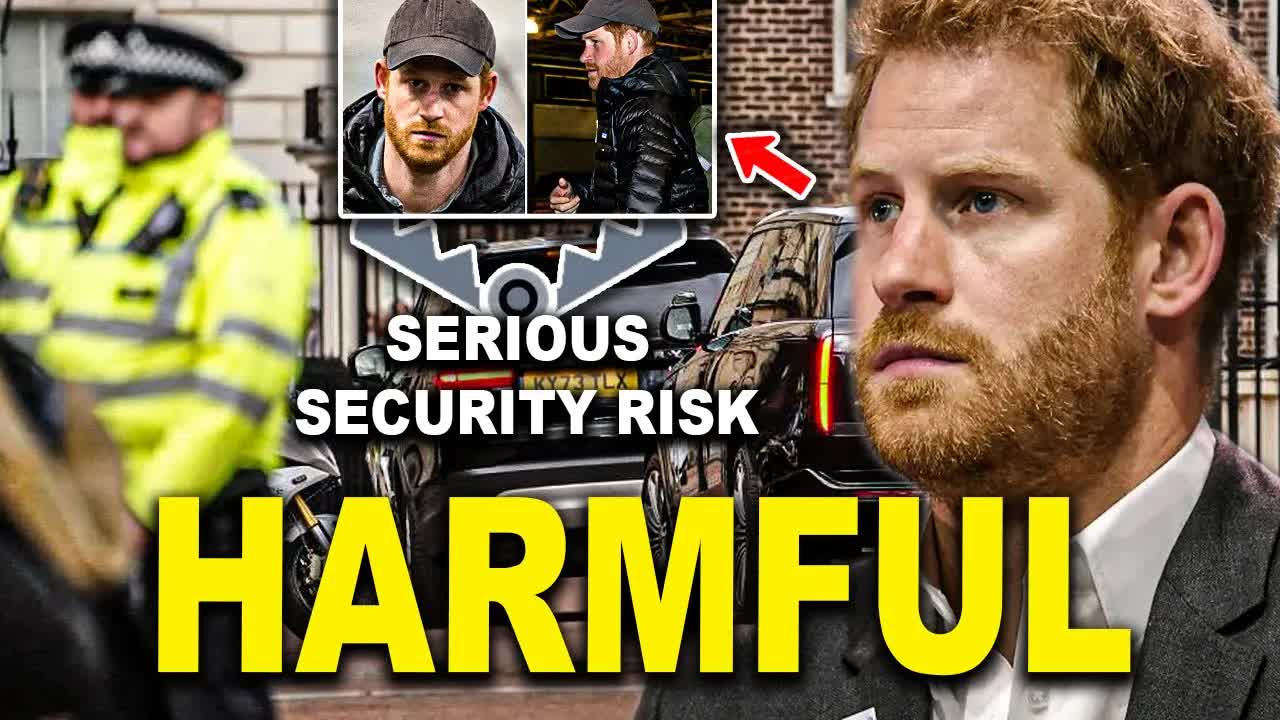Royal Security Concerns: Updates & Risks
In an era defined by escalating global tensions and evolving threats, is the security of royal families merely a matter of physical protection, or does it encompass a far more intricate web of intelligence, risk management, and crisis response? The reality is that the concept of "royal security concerns" transcends the traditional image of guards and fortresses, encompassing comprehensive strategies that are essential for safeguarding the lives and reputations of those in positions of power and privilege.
The complexities inherent in protecting royalty have been brought into sharp focus once again. Recent events, from abrupt changes in itinerary to investigations into potential breaches, serve as stark reminders of the multifaceted challenges faced by those responsible for ensuring the safety of monarchs and their families. In a world where the lines between public and private are increasingly blurred and where threats can originate from a variety of sources, the need for robust and adaptable security measures is more critical than ever before.
The use of chartering civilian aircraft by royal family members and ministers, as a result of shortages, highlights the logistical hurdles involved in royal protection. While these arrangements may provide a temporary solution, they inevitably introduce new vulnerabilities. Increased costs and the potential for security risks, including the planting of terrorist devices, underscore the delicate balance that must be maintained.
On a recent Monday, according to multiple reports, Britain's King Charles III and Queen Camilla were abruptly pulled from their royal duties due to a security concern. The details surrounding the incident, and indeed the very fact of such a disruption, highlight the constant vigilance required. Such events are a stark reminder that no security plan can be considered foolproof.
This incident is just the latest in a series of reminders that the life of royalty is far from a fairytale, but one marked by inherent risks. As former BBC royal correspondent Michael Cole noted, there is a "heightened sense of security concern" within the royal household. The past experiences of King Charles, who has dealt with various security incidents throughout his life, also serve as a reminder that the need for vigilance is a constant.
The visit of King Charles and Queen Camilla to Royal Square in St. Helier, Jersey, for a two-day visit was likely accompanied by an extensive security operation. These events, while celebratory in nature, inevitably involve complex planning and execution to mitigate any potential risks to the royal couple and the public. Such events demonstrate the critical role of intelligence gathering, risk assessment, and crisis management.
The ongoing case of Prince Harry and his security concerns in the United Kingdom has also brought issues of royal protection into the public eye. During court proceedings, Prince Harry raised concerns about the disparity in the level of security provided to him compared to his mother, Princess Diana, over two decades ago. He emphasized the need for robust security measures in light of contemporary challenges like racism and extremism.
Since stepping down from senior royal duties in January 2020, Prince Harry has found himself in a battle for his familys protection. The government's position reflects a change in his status, yet Harry has made it clear he does not feel his family is safe visiting the UK. These concerns highlight the ongoing debate regarding appropriate levels of security for public figures.
The role of the committee that oversees security arrangements for the royal family and other high-profile individuals, known as RAVEC, is also significant. The determination that the Duke of Sussexs security arrangement should be bespoke, due to his unique circumstances, highlights the need for flexibility and adaptability when crafting security protocols. This underscores the complex challenges involved in balancing personal safety with public perception and available resources.
The concept of "royal security" is not limited to physical protection. It encompasses a comprehensive framework that addresses a range of threats, including terrorism, cyberattacks, and reputational damage. It is a continuous process that demands expertise in many disciplines.
The challenges extend beyond physical security and include navigating the media landscape, managing public perceptions, and mitigating potential reputational damage. The need for expert crisis management teams is also essential when dealing with security breaches or other incidents.
Royal families have long been symbols of wealth, power, and history, but with that stature comes a significant responsibility. They represent traditions, cultural heritage and national identity. To protect these symbols, security measures must be comprehensive and adaptable.
The incident at Windsor Castle, where a burglary on the estate is under investigation, brings up more concerns about security. The theft of a pickup truck highlights the need for constant vigilance, even in areas considered secure. Such incidents serve as a reminder that no location is completely immune to risk.
The use of chartered civilian aircraft by royal family members and ministers due to shortages highlights the logistics of royal protection. These arrangements, while temporary, introduce new vulnerabilities. Increased costs and potential security risks, including the possibility of terrorist devices, underscore the delicate balance.
Royal Caribbean suspending calls to Labadee, Haiti, due to gang violence, is a cautionary tale for security, illustrating the real-world impact of security concerns on travel and global mobility. The suspension of calls underscores the global nature of security concerns and their capacity to affect both personal safety and business operations.
| Aspect | Details |
|---|---|
| Royal Security Concerns: | Encompass comprehensive strategies that involve intelligence gathering, risk assessment, and crisis management. These strategies address a range of threats, including terrorism, cyberattacks, and reputational damage. |
| Key Challenges: |
|
| Examples of Concerns: |
|
| Factors Impacting Security: |
|
| Security Measures Employed: |
|
| Recent Incidents Highlighting Concerns: |
|
For further information, see Official Website of the Royal Family


